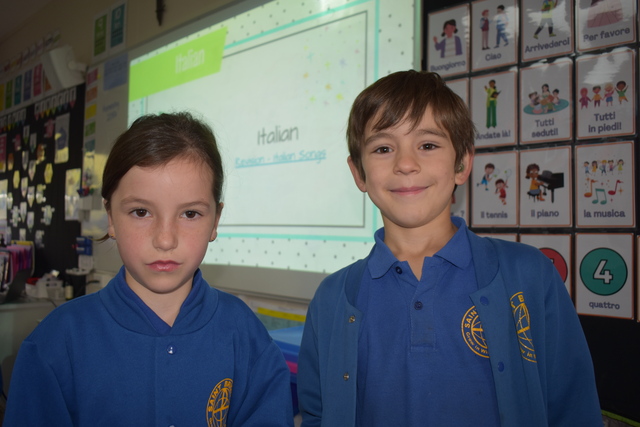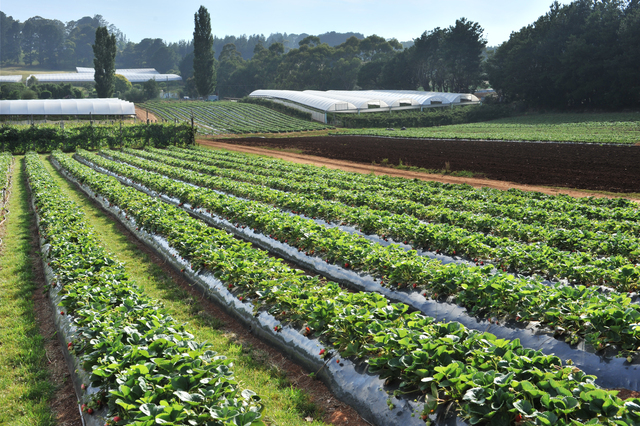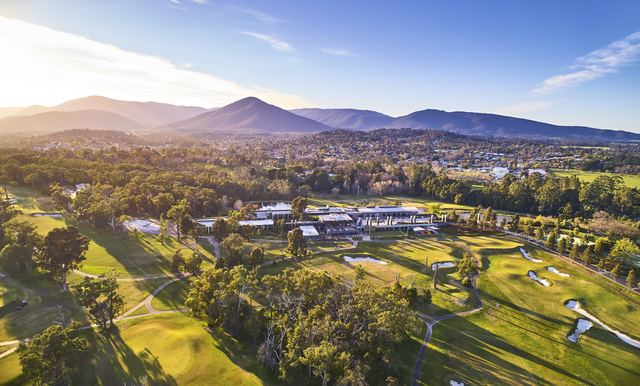St Brigid’s Catholic Primary School in Healesville has launched an Italian learning program with a new method since the beginning of this year, which results in a remarkable achievement.
In the new method, not only students but teachers are also learning Italian together as co-learner.
St Brigid’s Catholic Primary School languages leader Marcus Bree said students love learning alongside their teachers which has a positive effect on their retrieval.
“Rather than having a one-off session once a week with a language specialist, students do it for 15 minutes every day with their classroom teacher,” he said.
“I facilitate it as a leader and I help with navigating resources and using the slideshows that Catholic education [Melbourne Archdiocese Catholic Schools (MACS)] provides, and the classroom teachers are actually doing it.”
After a consultation among teachers last year, the school decided to change their approach to teaching a second language.
Mr Bree said the new method is much more effective than the traditional method.
“I used to teach Indonesian here and I did it in the more traditional method,” he said.
“What we found was [that when I taught Indonesian] I would do a lesson with the students and then I’d come back the week after and students got little snippets but they wouldn’t get the same level, whereas now because they’re reviewing every single day, the students are able to use it.
“It focuses more on functional language and we’ve got Grade 6 students now who are able to have conversations with the basic vocabulary that they’ve learned in less than a semester’s worth of work.”
The school has gotten great feedback from the parents about the progression of the students in Italian.
“I’ve had a lot of parents come to me and say they’re all speaking Italian at home to their brothers and sisters.
“They’re using it all the time and excited to be learning and doing something every day.”
When speaking with Grade 2 students, they all said they like learning Italian with their teacher.
“It’s really fun because I can sing songs and dance around [while learning Italian],” Kyran said.
“We’ve learnt numbers in Italian. Uno means one.”
“I like learning Italian because we learn different words with fun activities,” Maesie said.
“Sette is number seven in Italian. Grazie is thank you.”
St Brigid’s Catholic Primary School principal Tess Dwyer said she is proud of her staff and students for taking a risk and implementing the innovative approach to teaching Italian.
“I believe that this has added significant value to our students’ learning. I’ve been very impressed with the improved student and staff attitude towards learning a language and also expect this will flow through to other learning across the curriculum,” she said.
“It is wonderful to hear the students using the language in their classrooms and also during playtime, it’s great to hear students singing and conversing in Italian by choice in their play.”
According to the data from Live in Melbourne, 36 per cent of Italian migrants choose to live in Melbourne.
The Yarra Valley is one of the settlements in Melbourne chosen by many Italians.
The Yarra Valley Italian Cultural Group chair Luigi Fotia, who migrated from Italy to Australia in 1953, said he was happy to hear that local kids are learning Italian.
“Italian language is a very popular one to follow. It’s quite simple. It’s a good thing for students as well, I mean Italy is always a destination for young people at some stage to travel, and knowing certain basics is a big advantage,” he said.
There have been different waves of migration of Italians to Victoria.
The first wave happened during the gold rush period in the 1850s.
Many people from the same village or town in Italy migrated to Victoria.
The second wave took place after World War II.
From 1950 to 1970, many agricultural workers from regional areas such as Sicily and Calabria moved to Victoria.
“There were a lot of people who migrated from different parts of Italy, but the largest areas of Italy that Italians migrated to this area [the Yarra Valley] seem to be from Abruzzo and Calabria because mostly those areas are farming communities and this area [the Yarra Valley] has attracted people,” Mr Fotia said.
St Brigid’s Catholic Primary School has a few students who have an Italian background.
“We do have a prep student who speaks Italian fluently, he’s bilingual,” Mr Bree said.
“We are looking at having an Italian day where we might be able to utilise some of that community [Italian community] feel.”








